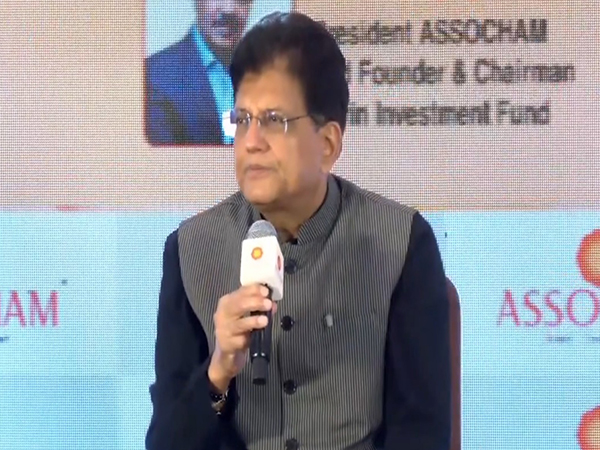New Delhi [India], July 10 (ANI): Global physically backed gold exchange-traded funds (ETFs) experienced their second consecutive month of inflows, attracting USD 1.4 billion in June according to the World Gold Council.
These inflows were widespread, with all regions seeing positive gains except North America, which faced mild losses for the second month.
Lower yields in key regions and weaknesses in non-dollar currencies increased gold’s allure to local investors, pushing global gold ETFs’ total assets under management (AUM) 8.8 per cent higher year-to-date to USD 233 billion. Collective holdings also rebounded, reaching 3,105 tonnes.
Despite the positive trend in June, global gold ETFs have lost USD 6.7 billion year-to-date, marking their worst first half (H1) since 2013.
Total holdings have dropped by 120 tonnes (-3.9 per cent) to 3,105 tonnes during this period, well below their October 2020 monthly high of 3,915 tonnes.
While Asian funds attracted a record USD 3 billion during H1, they were significantly outpaced by collective outflows in North America and Europe, which amounted to USD 9.8 billion.
Western gold ETF investors did not react as anticipated to the rise in the gold price, which commonly drives up investment flows.
This was amidst a high level of interest rates and a more risk-on sentiment generated by the AI boom. In contrast, Asian flows aligned with the price strength; weaknesses in non-dollar currencies and gold’s strong performance in those currencies attracted investors in the region.
North America continued to see mild outflows, shedding USD 573 million in June. The strength of the dollar and the continued equity rally may have drawn investor attention away from gold despite falling Treasury yields.
Nonetheless, flare-ups in geopolitical risk prompted sporadic inflows, partially offsetting larger outflows during the month.
North America saw outflows of USD 4.9 billion during H1, the largest in three years. However, a 13 per cent rise in the gold price during H1 resulted in a 7.7 per cent increase in North America’s total AUM, while the region’s collective holdings reduced by 78 tonnes.
European funds added USD1.4 billion in June, the second consecutive month of inflows. This helped narrow Europe’s H1 outflows to USD 4.9 billion.
The region’s central banks adopted a different path from that of the US Federal Reserve. In June, the European Central Bank delivered its first rate cut in almost five years, while the Swiss National Bank lowered rates for the second time this year.
In the UK, the Bank of England hinted at a potential cut but left rates unchanged following a surprise general election announcement.
Lowering yields were a key contributor to the region’s inflows, along with falling equities and political uncertainties related to elections in the UK and France, which sparked notable inflows.
Nonetheless, 2024 saw the worst first half for European funds since 2013, with USD 8 billion in outflows. Despite a 6 per cent fall in holdings, total AUM of European funds experienced a 6.3 per cent rise during the first half, thanks to the higher gold price.
Asia extended its inflow streak to 16 months, attracting USD 560 million in June. Similar to previous months, Asian inflows were mainly driven by China, which added USD 429 million in the month.
Persistent weaknesses in stocks and the property sector, as well as continued depreciation in the RMB, kept Chinese investor interest in gold elevated. Japan also witnessed its 16th consecutive monthly inflow in June, primarily supported by a weakening yen.
Asia registered inflows of USD 3.1 billion in H1, significantly outpacing all other markets and being the only region to witness positive flows.
This represents the strongest ever H1 for Asian funds, mainly driven by record-level inflows into China and Japan.
Supported by these record-breaking inflows and a higher gold price, the total AUM of Asian funds reached USD14 billion, the highest ever, while collective holdings increased by 41 tonnes.
Following two consecutive monthly outflows, funds in other regions captured a small inflow of USD37 million in June, led by Australia and South Africa. In H1, funds listed in other regions saw mild outflows, mainly from Turkey.
Global gold trading volumes across various markets averaged USD195 billion per day in June, down 9.5 per cent month-on-month.
Over-the-counter (OTC) trading activities rose by 8.6 per cent compared to May, with LBMA trades being the main driver, signaling robust demand globally.
In contrast, exchange-traded derivatives saw a 32 per cent month-on-month plunge: volumes at COMEX fell by 35 per cent month-on-month and Shanghai futures trading continued to cool, down 24 per cent. Gold ETF trading volumes contracted by 15 per cent month-on-month, mainly due to North American funds.
Despite the decline in June, global gold market liquidity averaged USD210 billion per day, remaining well above Q1 (USD182 billion per day) and 2023 (USD163 billion per day).
Rising OTC trading activities, mainly at the LBMA, together with surges in the Shanghai Futures Exchange and the North American gold ETF market, were main H1 contributors.
Commodity Exchange (COMEX) total net longs remained stable at 767 tonnes by the end of June, a 1 tonne month-on-month decline.
Meanwhile, money manager net longs rose further, reaching 575 tonnes at the end of June, a 3 per cent increase month-on-month and the highest month-end value since February 2020.
Total net longs and money manager net longs have risen in H1 by 13 per cent and 36 per cent respectively – the strong gold price performance and various uncertainties on multiple fronts may have attracted investors. (ANI)
Disclaimer: This story is auto-generated from a syndicated feed of ANI; only the image & headline may have been reworked by News Services Division of World News Network Inc Ltd and Palghar News and Pune News and World News
HINDI, MARATHI, GUJARATI, TAMIL, TELUGU, BENGALI, KANNADA, ORIYA, PUNJABI, URDU, MALAYALAM
For more details and packages
















